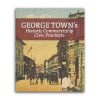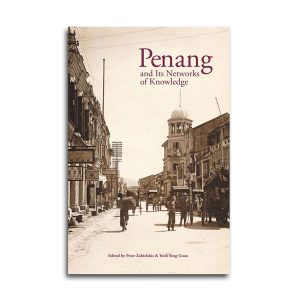The development of George Town’s historic commercial and civic precincts occurred under two distinct administrative phases: 1) under the British East India Company (EIC) (1786–1858) 2) under British Crown rule which lasted until just after the Japanese Occupation (1941–1945) during World War II (WWII).
Beach Street was one of the first thoroughfares established in George Town and once literally ran along the seafront, with mercantile businesses hugging the seaward side. Business was derived from visiting EIC ships on the Britain to China trade route as well as free ‘country traders’ and local and regional trade. The owners of these properties gradually extended them seawards leading to a ‘defacto’ reclamation of seafront land for which owners of property along Beach Street were issued grants in 1870. A second reclamation was undertaken by the government between 1883 and 1889. This land too was granted to the adjoining landholders at nominal cost. In the early years British and other European merchants tended to dominate the northern end of Beach Street with Chinese, Indian, Arab and Malays the balance.
On the mainland tin had long been mined by the Malay sultans and had formed a valuable part of their trade with the Dutch and British East India Companies. Chinese immigrants slowly dominated the industry by the mid-1800s, some taking controlling interests and amassing huge fortunes. As large-scale industrial techniques were introduced concessions were bought out, mainly by British companies, leading to a boom in the late 19th and early 20th centuries. Rubber was also first planted around the end of the 19th century and rapidly became the next boom. Penang’s location at the top of the Straits 3 of Malacca made it an ideal port location which in turn drove the mercantile boom of the early 1900s when many of the prominent buildings we see today were constructed. Significantly, the Hokkien Chinese call the section of Beach Street between the Clock Tower and China Street ‘Ang Mor Thau Kay’ which translates as ‘European Commercial Street’. Despite this name, by the end of the 19th century many of the buildings in this sector were owned by Chinese tin and rubber tycoons who leased them to the foreign companies.
Sadly, many of these were destroyed by Japanese and allied aerial bombing during WWII, leaving George Town today deprived of some of its grandeur of 100 years ago. This guide aims to assist visitors to better understand and enjoy many of the remaining buildings which comprise George Town’s Historic Commercial and Civic Precincts.
For further reading, please see our newsletters.









